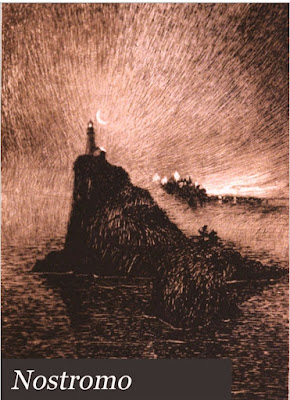Nostromo
by Joseph Conrad
(1904)
F. Scott Fitzgerald once said of this book, "I'd rather have written Nostromo than any other novel.” The story commences with the titular Nostromo, an Italian seaman, transporting a wealth of silver so that it cannot corrupt the local affairs of Sulaco (a port city in a fictional Colombia-like country). But when Nostromo’s ship is compromised, he stashes the silver on a nearby island, leading everyone to believe it was lost at sea. What follows is an incredibly affecting account of Nostromo’s increasing disillusionment and paranoia, as he realizes that other men see him as a pawn and grows obsessed with his hoarded silver. If you loved The Great Gatsby, but wanted it to be even darker and more geopolitical — as Fitzgerald apparently did — you’ll devour Nostromo faster than you can say “quicksilver.”
Buy Joseph Conrad Books at Amazon
About the Author
Joseph Conrad (born Józef Teodor Konrad Korzeniowski, Polish: [ˈjuzɛf tɛˈɔdɔr ˈkɔnrat kɔʐɛˈɲɔfskʲi] (audio speaker iconlisten); 3 December 1857 – 3 August 1924) was a Polish-British writer regarded as one of the greatest novelists to write in the English language. Though he did not speak English fluently until his twenties, he came to be regarded a master prose stylist who brought a non-English sensibility into English literature. He wrote stories and novels, many with a nautical setting, that depict trials of the human spirit in the midst of what he saw as an impassive, inscrutable universe. Wikipedia
The PDF might take a minute to load. Or, click to download PDF.
If your Web browser is not configured to display PDF files. No worries, just click here to download the PDF file.




No comments:
Post a Comment